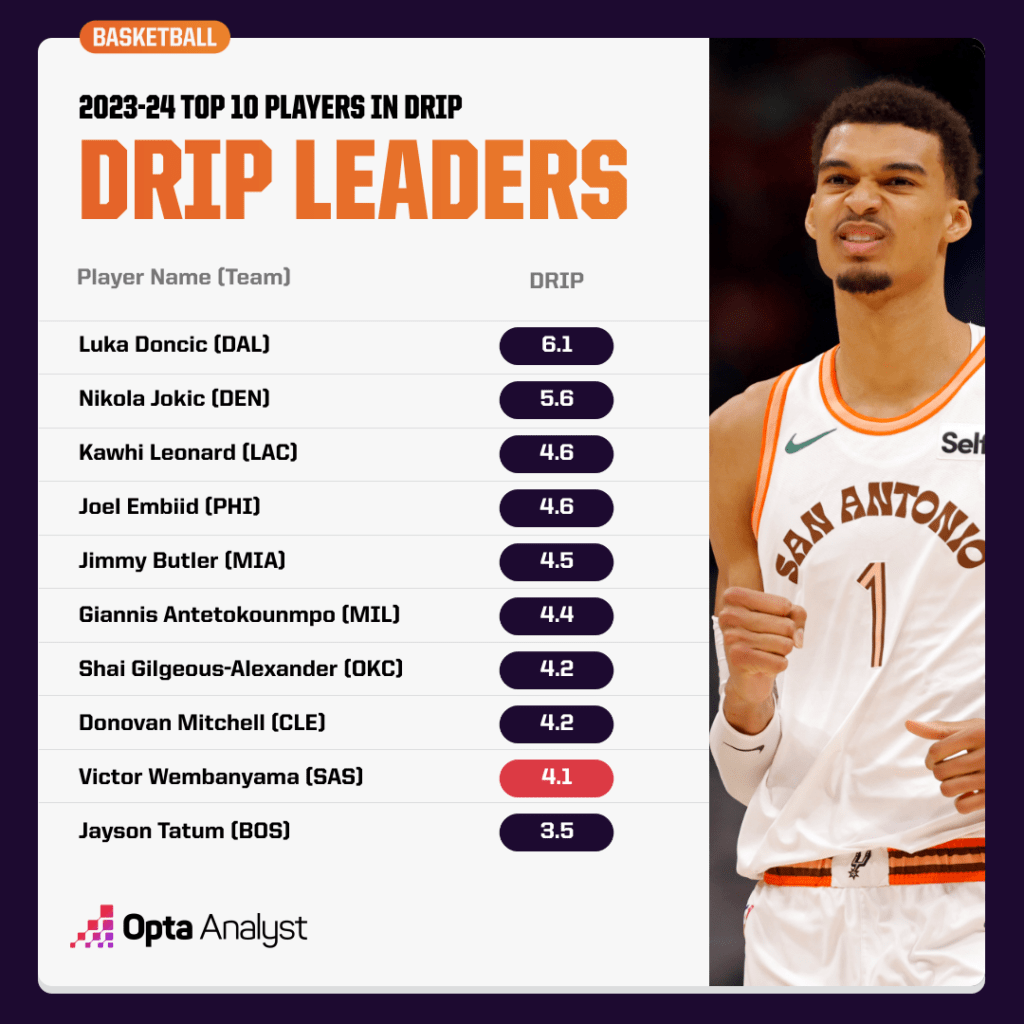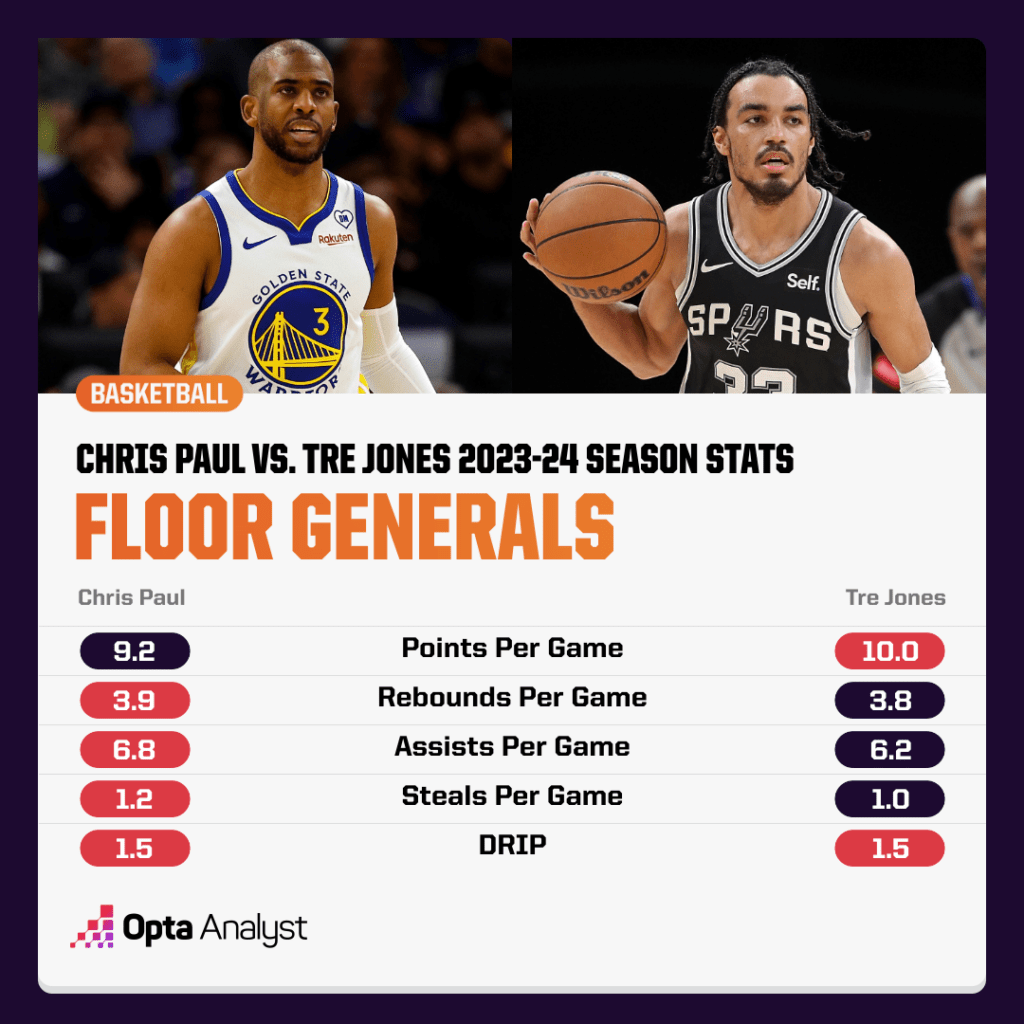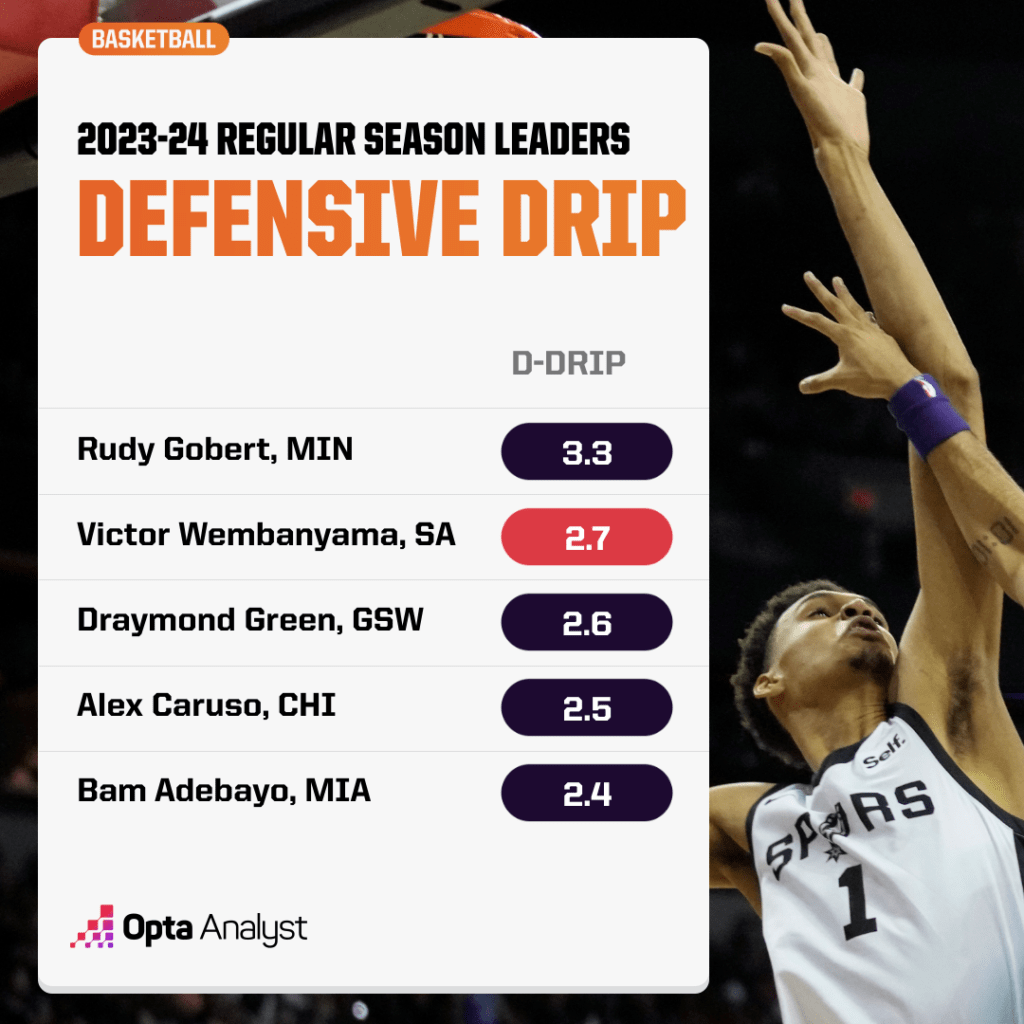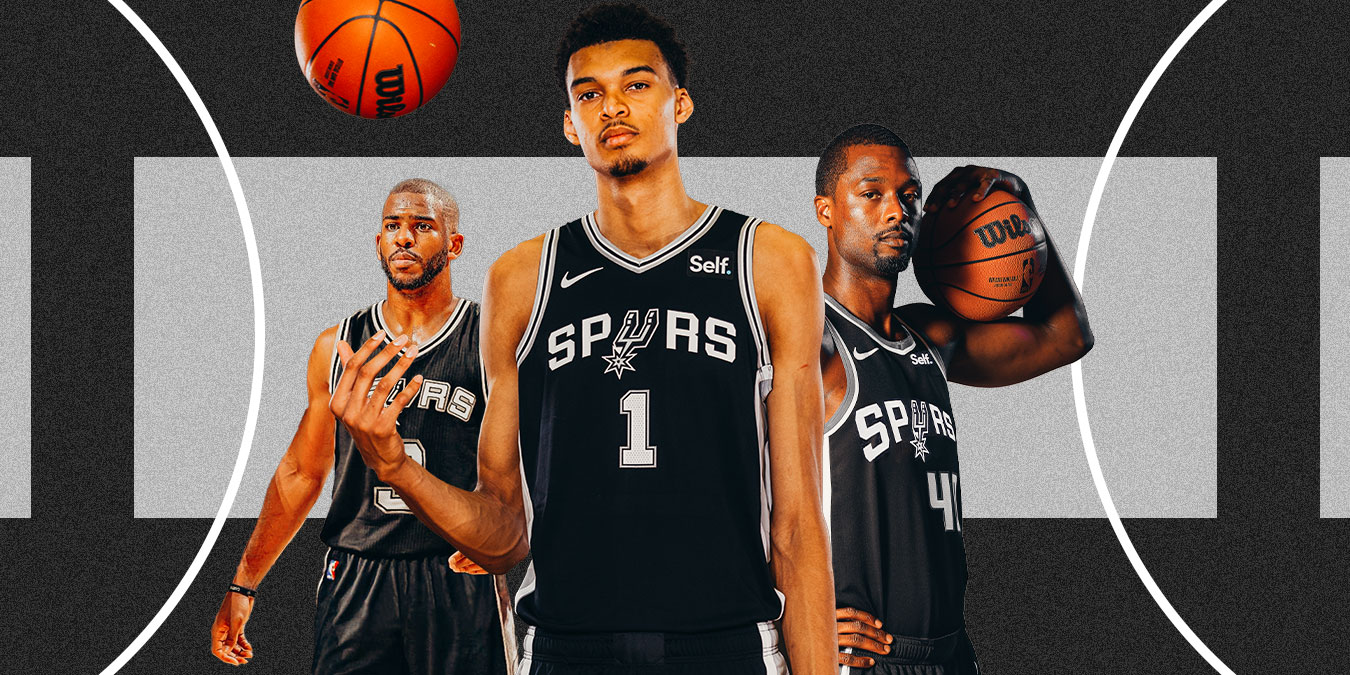Though many people expected him to be good right away, Victor Wembanyama proved to be that and much more in Year 1.
The generational prospect put together one of the best rookie seasons in recent memory en route to a runaway NBA Rookie of the Year victory.
Having a burgeoning superstar on your roster is a blessing and a curse. On one hand, it gives you a great building block to craft your team around. But on the other hand, it puts pressure on your organization to start winning as soon as possible.
After all, you don’t want to waste even a single season of a player with GOAT potential.
So, where do the San Antonio Spurs stand heading into Wembanyama’s sophomore season? Do they have the pieces necessary to make a play-in push? Or will they fumble away another season of Wembymania?
Wemby’s Sophomore Leap
It goes without saying that Wembanyama will continue to develop his game during his sophomore season. And man, is he already really darn good.
He finished 2023-24 ranked ninth in entire NBA in DRIP, which projects a player’s contribution to his team’s plus/minus per 100 possessions.

He made history along the way, becoming the only player (not just rookie) to average at least 20 points, 3.5 blocks, 1.5 3-point field goals and 3.5 assists in the same season since 1979-80.
If we take out 3s, steals and blocks to get a data set that goes back all the way to the 1950-51 season, Wemby is one of only three 7-footers to average 20 points, 3.5 assists, 10.5 rebounds and shoot 79% from the foul line (Wilt Chamberlain fell way short in this category).
The other two have won MVPs: Joel Embiid (three times) and Nikola Jokic (five times).
How high can Wembanyama climb up the leaderboard in Year 2? Top seven? Top five? No. 1?
Even if he doesn’t get any better than he was in his rookie year, Wembanyama has already shown us what he can do when he gets the chance to play next to capable veterans.
Adults in the Room
Anyone who was keeping an eye on the Spurs last year recalls the whole fiasco that was going on at point guard. For the first two-plus months of the season, they started Jeremy Sochan (more on him in a bit), a player who normally slots in at forward, as their nominal point guard. This led to some fascinating lineups but also some depressing offensive possessions.
Eventually, the Spurs swapped Sochan out for a traditional point guard in Tre Jones. And while no one will mistake Jones for an All-Star, just having a serviceable floor general next to Wembanyama turned the Spurs from a bottom-feeder (5-29 through Jan. 3) into a semi-respectable NBA team (17-32 after Jan. 3).
When Jones and Wembanyama shared the floor (1,285 minutes), the Spurs were even more than semi-respectable. They were legit good, posting a net rating of plus-4.3 compared to a minus-11.3 mark when either one or none was on the court.
That’s what makes the one-year, 11-million dollar deal Chris Paul signed with the Spurs intriguing. Yes, Paul is now a 39-years-old point guard. But the elder statesman showed last year that he can still be a positive impact player in a consolidated role.
In 26.4 minutes per game, Paul averaged 9.2 points, 6.8 assists and 1.2 steals while posting the exact same DRIP (1.5) as Jones. He also showed that he can still run the pick-and-roll at a high level (70th percentile pick-and-roll ball handler efficiency, per NBA.com), which will come in handy playing alongside Wembanyama.
Between Paul and Jones, the Spurs can ensure (when they are both healthy) that they will have 48 minutes of strong point guard play every single night.

The other big veteran name the Spurs added was Harrison Barnes as part of a three-team sign-and-trade with the Chicago Bulls and Sacramento Kings. At a glance, Barnes may seem like a throwaway, someone the Kings needed to get off of in order to level up their roster.
However, I maintain that Barnes is still a starting-caliber player in this league. Last season, Barnes placed in the 72nd percentile in 3-point efficiency (38.7%) and the 61st percentile in 3-point volume (6.1 3s per 75 possessions). He also showed proficiency as a closeout attacker, placing in the 78th percentile in true shooting on drives.
Barnes is a great spacer at the 4. The problem is that he doesn’t give you much defense (20th percentile D-DRIP) or secondary rim protection (seventh percentile block rate). When you have a center with vertical defensive limitations like Domantas Sabonis, those constraints won’t fly.
But when you have an elite rim guardian like Wembanyama (99th percentile block rate), those shortcomings are just fine.

The Boys Could Grow Up
With Wemby, Jones, Paul and Barnes, the Spurs have four players they can definitely pencil in for big minutes. But if the Spurs plan on making a play-in push, some of their other young players are going to need to be ready for a major role.
The best bet in that regard is Devin Vassell, who was second on the team in O-DRIP behind only Wembanyama last season.
Vassell has always been a tantalizing offensive player because of his ability to score on and off the ball – in a similar vein but not nearly to the same degree as the likes of Michael Jordan, Kobe Bryant and Dwyane Wade.
And last year was the best year yet for the blossoming bucket-getter, as Vassell posted a career-high in rim field goal percentage (68.2%), midrange percentage (45.2%), and overall scoring efficiency (57.8% true shooting).
It wasn’t a great defensive season for Vassell (40th percentile D-DRIP). But he does have good tools for a shooting guard (6-foot-7 with a 6-10 wingspan), and we’ve seen in the past that offense-first players can rise to the occasion on defense on more competitive teams.
The other on-ball/off-ball scoring forward in San Antonio’s ranks is Keldon Johnson. Unlike Vassell, 2023-24 wasn’t kind to Johnson. After starting 204 of 207 games from 2020-23, Johnson only started 27 of 69 games last year.
Statistically speaking, Johnson is an even worse defender than Vassell (third percentile D-DRIP), and he’s failed to rekindle his shooting stroke from 2021-22 (when he shot 39.8% from 3). Still, Johnson is a wrecking ball when it comes to getting to the rim (75th percentile rim frequency) and the charity stripe (75th percentile free throw frequency).
Players like Johnson, who can get to the paint at will, are supremely valuable. If he can just get his 3-point groove back and give greater buy-in on defense, Johnson could easily fill that fifth starting spot next to Paul, Vassell, Barnes and Wembanyama.
(Sidebar: I am much higher on Vassell than I am on Johnson at this point.)
I mentioned the whole Sochan debacle earlier, and while Sochan at point guard was an utter failure, it also took away from what was an otherwise solid sophomore campaign.
After the Spurs’ Jan. 2 loss to the Memphis Grizzlies, Sochan was moved back to his natural position at forward. Before that change, the Spurs had a net rating of -13.9 during Sochan’s minutes. But after the switch, their net rating went all the way up to a -2.3 in those spurts.
As I outlined in his rookie breakdown in 2023, Sochan has a skill set that is very similar to Hall of Famer Dennis Rodman. He’s a defense-first forward (72nd percentile D-DRIP), who loves crashing the offensive glass (72nd percentile offensive rebounding rate), and offers some underrated passing chops.
If Sochan doesn’t end up being the fifth starter, he could operate in the same capacity that Rodman did during his early days with the Detroit Pistons – as a supercharged Energizer Bunny off the bench.
The last player I could see falling into that fifth starter role is 2024 NBA Draft fourth-overall pick Stephon Castle. For those who aren’t familiar with the national champion’s game, Castle functions very similarly to Anthony Black and Dyson Daniels – a defense-first guard/wing who is adept at cutting and connective-tissue passing (but lacks a reliable outside jumper).
The Spurs could choose to start Castle over Johnson or Sochan to ensure that they have a strong point-of-attack defender in their starting lineup.
Outside of those four, the three other main young guys worth talking about (Harrison Ingram is on a two-way, so we’ll leave him out of this for now) are Malaki Branham, Julian Champagnie and Blake Wesley.
The former has demonstrated some nice offensive flashes, while the latter two have done the same with defense, but none of them have shown enough for me to believe they can be consistent role players next season.
The Bottom Line
On paper, the Spurs have some good things going for them. They have a player who likely will land on an All-NBA team next year, a couple of reliable veterans, and young players who could experience leaps that allow them to take on a bigger role within the team.
But they also have some major obstacles to overcome if they plan on making a play-in push. First, the Western Conference is up to its usual standard, with all but two teams (the Utah Jazz and Portland Trail Blazers) coming into the season with expectations of making the playoffs.
Second, the Spurs are relying on a lot of young players, and if things don’t break their way, they could be running very shallow in terms of playoff-caliber players.
I trust Vassell to step up alongside Jones, Paul, Barnes and Wembanyama. But outside of him, the team will need three of Johnson, Sochan, Castle, Branham, Champagnie and Wesley (I wasn’t happy with what I saw from Zach Collins last year) to play like rotation-level players if they want to field at least eight quality players in their night-to-night rotation.
Lastly, no matter how things go with their young players, this Spurs team will be sorely lacking in spacing. Jones, Paul, Wembanyama, Sochan, Castle, Champagnie and Wesley are all below-average spacers. That’s over half of their projected 10/11-man rotation. As a general rule, it is really hard to win in this league when you are trotting out more than one or two below-average shooters at once.
Overall, I think the Spurs will be very similar to last year’s Houston Rockets. The moves they made to add experience to their ranks will bring them closer to the play-in. But ultimately, their reliance on unproven youth, lack of spacing, and presence on the tougher side of the bracket will keep them just short of the tournament.
Be sure to check out all our MLB, NBA, college football and NFL coverage. And follow us on X and Instagram for more!
